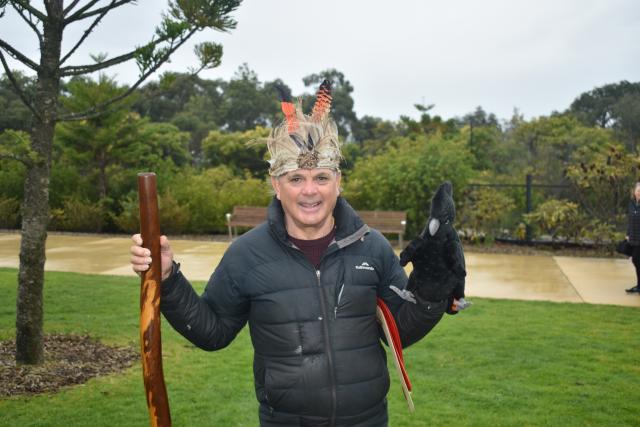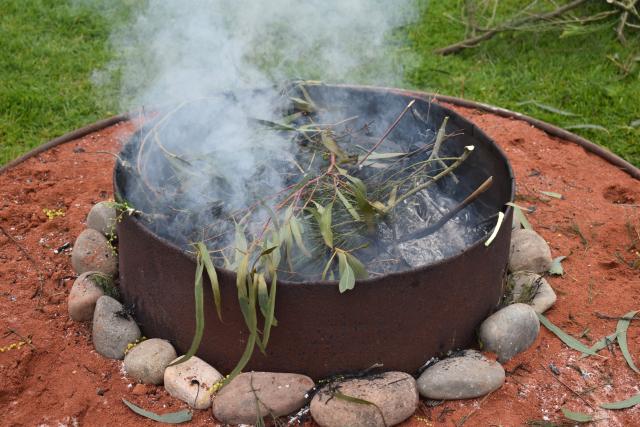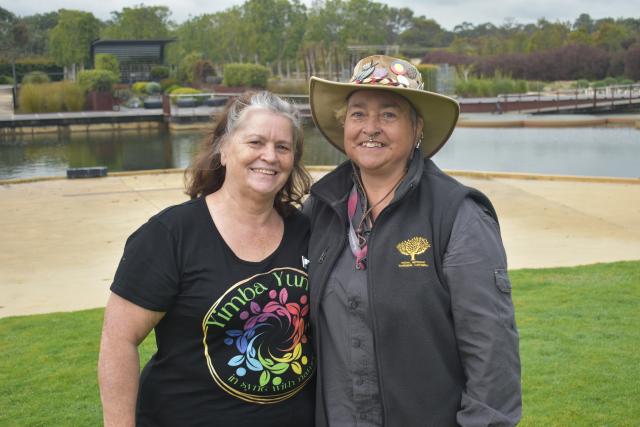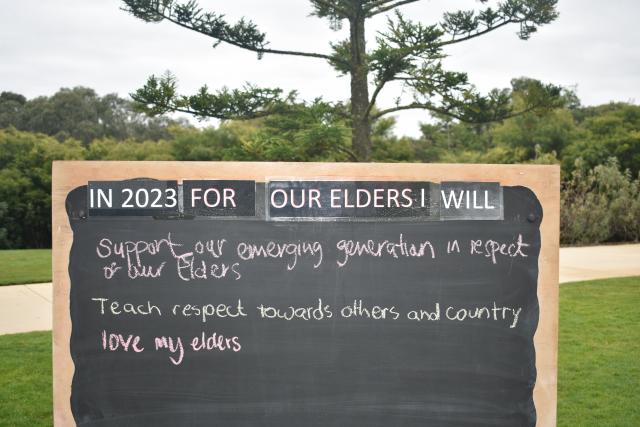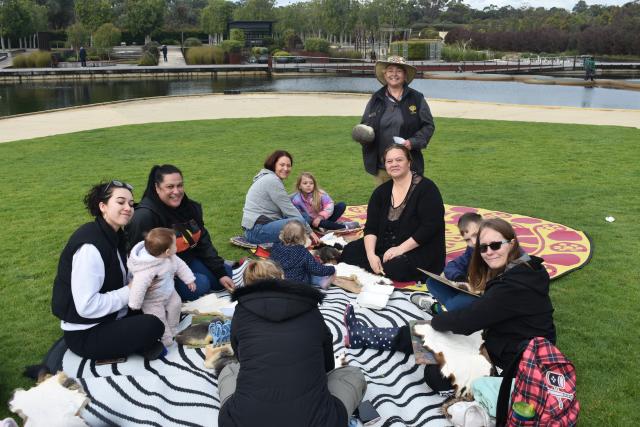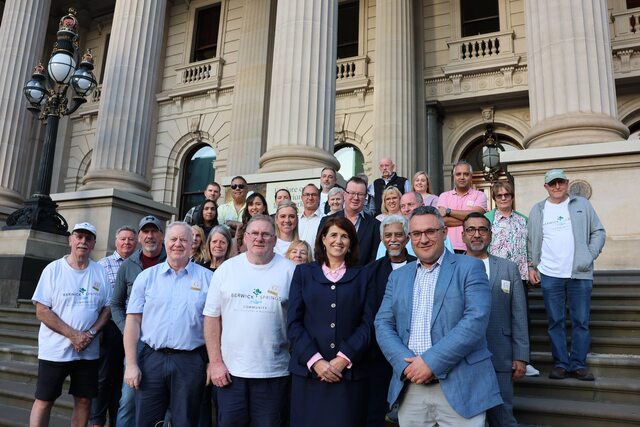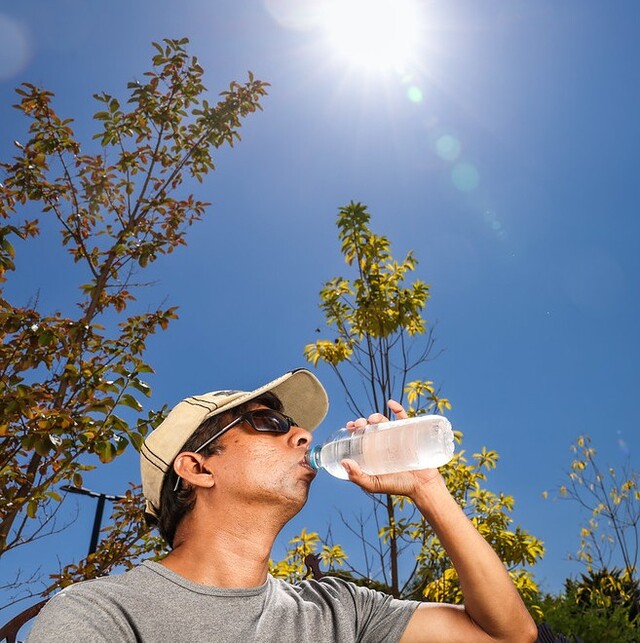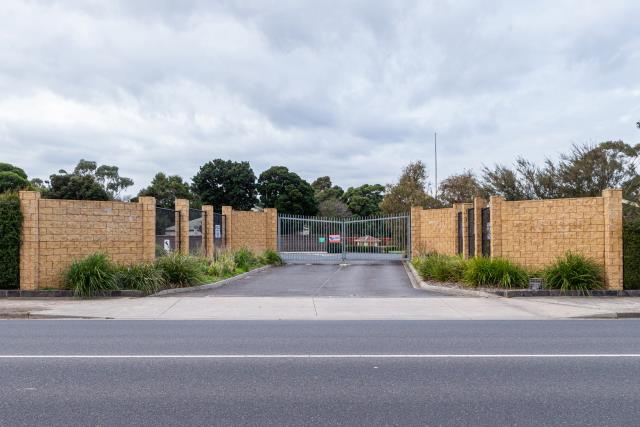The Royal Botanic Gardens Cranbourne celebrated the rich heritage, history and culture of Australia’s First Nations people in their NAIDOC week events.
Running from Tuesday 4 until Thursday 6 July, the Gardens held a variety of events designed to honour Aboriginal culture and educate the wider community about the many amazing and interesting facets of First Nations history.
The celebrations began with a Welcome to Country and smoking ceremony led by Uncle Mark Brown of the Bunurong Land Council.
Dozens of children and adults gathered to bask in the earthy smoke.
The smoking ceremony was followed by a storytelling session, led by Uncle Ron Murray.
“It is important for the different nationalities coming into Australia, coming onto this land, to hear our stories,“ Uncle Ron said.
“A lot of our stories start in the Dreamtime and talk about lessons where the animal did something wrong and got punished for it, or how the animal ended up like it is, and it makes people understand the land better.
“A lot of it is talking about our Mother, which we walk on every day, and how we should treat her better.“
A proud Wamba Wamba man, Uncle Ron told the children about his totem animal, the Red Tailed Black Cockatoo, of which only around 980 remain in Victoria.
As the rain picked up, the children nestled into an undercover tent to experience Uncle Ron’s storytelling magic.
Uncle Ron used his didgeridoo to make the sounds of different animals, asking the kids to guess who he was impersonating.
The sounds included a dog, cat, kangaroo, kookaburra, owl, snake and even a small child running after their parents.
Using plush animals and plenty of zest, Uncle Ron told the story of Perraweena the snake, who desperately wished he could sing.
The story came to explain why snakes sleep all winter long.
Uncle Ron also told the story of why wombats only come out of their burrows at night, and how kangaroos became the fastest animals in Australia, bounding on their hind legs.
Aboriginal Learning Facilitator Janine “Jaffa“ Richardson is a proud Dja Dja Wurrung woman, and has been working alongside Uncle Ron for ten years to bring the Dreamtime stories back into children’s imaginations.
“Working with Uncle Ron is one of the most important ones, because this is telling stories to our little bubups (kids), this is getting them in young,“ Jaffa said.
“This is where you’re getting into your grassroots.“
Jaffa has been part of the Gardens crew for coming up on ten years, and the NAIDOC events are something she takes immense pride in organising.
While the NAIDOC celebrations used to be held across one big day, Jaffa found that spacing them out over a week allows for “more diverse“ events.
On Wednesday, Jaffa ran her own event making mini marngrooks (possum skin balls).
Using possum pelts from New Zealand, groups of participants were instructed on how to cut, sow and stuff the pelts in order to make their ball.
Marngrooks were the first footballs, and as Jaffa explained, First Nation’s peoples invented “footy“.
“The games might go on for days,“ she said.
The possum skin ball would be stuffed with mud and grasses to make it heavy, according to Jaffa.
“They were stuffed as hard as possible to make them as strong as possible,“ she said.
Jaffa emphasised the importance of showing respect to the possums by using as much of the pelt as possible.
She explained head pieces and tails were often turned into arm bands and parts of skirts, which she continues today in her playgroup.
In another event, Bidjara woman Karan Kent led a large group of participants through a Wayapa Wuurrk meditative session.
“Wayapa is all about reconnecting with the environment, with the dirt,“ she said.
“It’s about sustainability, our connections with the earth and our connections between each other.
“We’ve lost those connections, you know, everybody sits there on their tablets and we don’t see each other anymore.“
Wayapa is a form of moving meditation created by Jamie Thomas and Sara Jones in 2014.
Wayapa Wuurrk means “Connect to the Earth” in the language of the Maara & GunaiKurnai peoples respectively.
Karan received her dimploma in Wayapa in 2017, and by 2019 she had started Yimba Yumba, or “home learning“.
“If you’re moving, the movement is really good for your body and your mental health,“ Karan said.
During the session, Karan combined movement with story, as she told her people’s creation story and the 14 elements that comprise her collective history.
Each element came with it’s own movement, as the story moved through the body.
Karan encouraged the participants to move through the session barefoot, despite the dew-soaked and winter-chilled grass below.
To her, being barefoot is an essential component of regaining our connection to the earth.
“All of these mental health issues have come about because we’ve put things on our feet,“ she said.
“We’ve lifted ourselves up off of the ground, we’re sitting on chairs and blankets, our body isn’t literally connected to the earth.“
Wayapa focuses heavily on the earth-mind-body-soul connection, where a conscious connection to the environment must come before balance can be achieved in any aspect of the human form.
“In the modern era, we’ve lifted ourselves away from the environment,“ Karan said.
“So the environment is out there, and we’re in here, so we’re two different things as opposed to being one.
“But we are the environment, and the environment is us.“
Other events included traditional Aboriginal games and the performance of a “mob dance“ by Indigenous Outreach Projects (I-OP) Hip Hop Crew.

